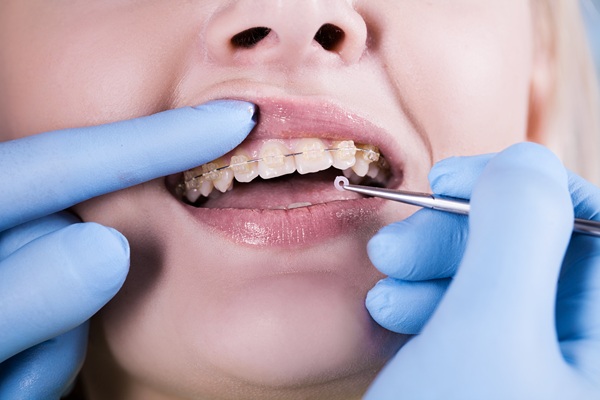 Metal braces have been a longstanding orthodontic treatment. People have used this method for decades, though teeth straightening has been common for centuries. If you are unhappy with your smile because of crooked teeth or bite abnormalities, your orthodontist can help. As you start treatment with braces, there are some tips you need to keep in mind. It is also helpful to understand how the process works.
Metal braces have been a longstanding orthodontic treatment. People have used this method for decades, though teeth straightening has been common for centuries. If you are unhappy with your smile because of crooked teeth or bite abnormalities, your orthodontist can help. As you start treatment with braces, there are some tips you need to keep in mind. It is also helpful to understand how the process works.
A look at what braces do
It is not uncommon for people to have crooked teeth, bite problems, and other issues that affect their smile. Metal braces can fix these misalignments and restore teeth and jaws to their correct positions. This treatment can also address crowded teeth, gaps in the mouth, and abnormally shaped and worn teeth. Patients as young as age 7 can begin seeing an orthodontist. However, treatment with braces can work well for teens and adults as well.
Braces consist of brackets, which the orthodontist will affix to the teeth with dental cement. Wires run through the bracket, and elastic bands hold the wire in place. Together, these components put pressure on the teeth. This force moves the teeth in the right places in the mouth. Once the patient gets used to wearing braces, the person will have comfort and peace of mind.
Every patient’s treatment is different
There is no one-size-fits-all approach to this treatment. Each patient has different needs, and the severity of each patient’s teeth will differ. These factors play a role in the length of the treatment and the types of adjustments the patient will have. Typically, the treatment will take 18 to 24 months. However, people who have severe bite misalignments and extremely crooked teeth may have to wear braces for closer to three years. Patients with minor concerns may get the results they need in as few as 12 months.
Avoid certain foods
Braces are durable, but the components are not indestructible. Biting into certain foods and objects can damage the brackets or wires. A patient could even break a bracket off from a tooth. The most sensible way to avoid this problem is to stay away from certain foods. Hard foods such as popcorn kernels, hard candy, nuts, and ice can cause problems. The person should minimize the intake of sticky and chew items in their diet too.
Hygiene is crucial
Good oral hygiene is also something a person should prioritize. Brushing at least twice a day and flossing daily will help to prevent cavities and gum disease. While wearing braces, these tasks become more difficult. It can be challenging to effectively reach all the teeth during this treatment. Flossing requires the use of floss hooks to thread the floss between each tooth. People who wear braces need to be diligent and follow proper guidelines to achieve the goal of permanence with a new smile.
Get the most out of your treatment
Your new smile awaits, and you can soon have straight teeth and the appearance you have wanted. Braces can successfully help you achieve your goals and do so with discreetness. But you need to do your part and understand how this method works. Also, by following these tips, you can ensure that you will get the care you need.
Request an appointment or call Michael Emanuel DDS PLLC at 718-635-4822 for an appointment in our Brooklyn office.
Related Posts
Curious about orthodontic treatment? Read on to learn more. Straight teeth and properly aligned jaws make for a healthy and functional smile. Many people are lucky to have naturally straight teeth, but others require orthodontic intervention to correct overcrowding, gaps, or misalignment. In some cases, orthodontic therapy can extend far beyond repositioning the teeth in…
Discovering you need orthodontic care does not have to be a worrisome situation. The orthodontist will help you the whole way, and the staff will guide you on any concerns, ranging from financing to maintenance. If you have booked an appointment with an orthodontist, this piece provides a guide on what to expect and questions…
Maintaining the position of the teeth after orthodontic treatment requires the use of dental retainers. Read on to learn about the different types of retainers available. As soon as the braces or aligners come off, your teeth will begin repositioning themselves to where they were before treatment. To avoid relapse, you should use retainers. They…


